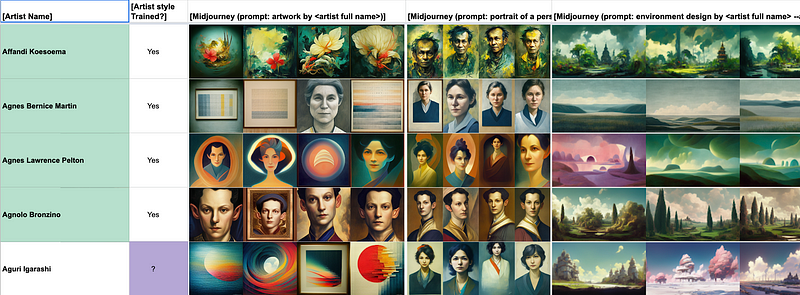The Transformation of Artistic Expression in the AI Era
Written on
The Rise of AI-Generated Art
The Knight, inspired by the renowned artist Greg Rutkowski, was crafted using Midjourney, an AI art generation platform. Interestingly, when Rutkowski searched for his name online, he stumbled upon numerous impressive illustrations; however, they were not his creations. In fact, Rutkowski's name has been incorporated into over 93,000 text-to-image prompts generated by AI.
Every day, countless artists are having their styles emulated by AI, leading to the production of art that can be nearly indistinguishable from the original works. Resources, such as a handy guide from the Midjourney community, have emerged to assist users in locating the artists they wish to reference in their prompts.

Challenges with Copyright and AI
A significant concern arises from the fact that AI data sets often include hundreds or thousands of copyrighted artworks, and artists have no means to opt-out once their art has been used for AI training. With Stability.AI’s Stable Diffusion model being open-source, there is no regulatory body overseeing how images are collected. Although the license agreement suggests adherence to a copyright infringement code, enforcement remains a challenge.
The question remains: Are copyright laws truly being violated? How does this situation differ from an individual who mimics an artist’s style to create original work? Under current copyright law, one cannot claim ownership over a style or technique. Copyright protection applies only to the reproduction of specific artworks, not to the creation of similar pieces in the same style.
However, using an artist's entire body of work to train an AI, which can then generate similar pieces, feels inherently wrong. Floris Didden, Art Director at Karakter, states, “If you train an AI to flawlessly replicate a specific artist’s style, it seems to infringe upon the artist’s rights in some way, even if not directly violating copyright.”
Karla Ortiz, an illustrator from San Francisco, notes, “A coalition is forming among artists to find ways to address this issue. This group is still in its infancy and may seek to advocate for new regulations or policies.”
The Future of Artistic Styles
In the near future, it's plausible that a significant portion of artwork indexed online will comprise AI-generated pieces. The prevalence of AI in art will likely lead to an emphasis on artistic styles over individual artists.
Does this trend devalue the work of artists? Ironically, many, including Rutkowski, are gaining recognition due to their names appearing in AI prompts. Could it be that AI, which seems to pose a threat to artists, inadvertently enhances their visibility? The original works of artists like Rutkowski may become even more valuable compared to AI-generated replicas.
Final Thoughts on AI and Art
The coming months will be pivotal in determining the trajectory of art in the age of AI, which continues to expand rapidly. The use of artistic styles will persist, regardless of whether specific artist names are included in prompts.
The Pandora's box of artistic styles has indeed been opened, leading to a new and complex relationship between artists and AI-generated art.
Related Articles: - Should AI Art Be Considered Art? - AI Art Wins Competition And Sparks Controversy